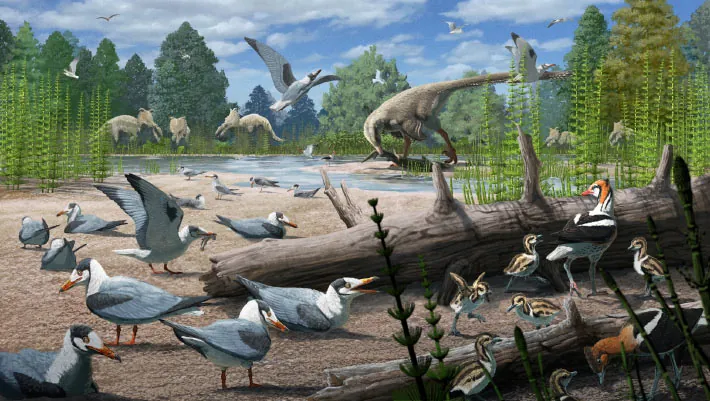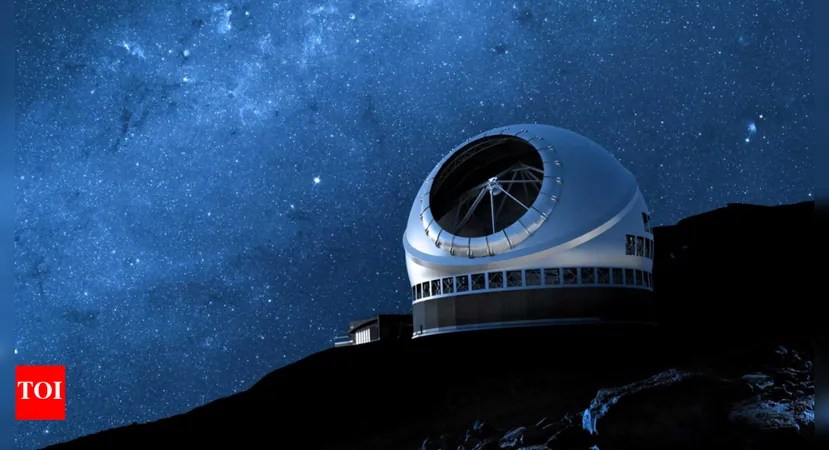
Ancient Bird Fossils Reveal Surprising Nesting Habits in the Arctic 73 Million Years Ago!
2025-05-30
Author: Rajesh
Unveiling the Secrets of Arctic Nesting
Birds have long been vital to polar ecosystems, serving as essential members of these habitats as they nest seasonally. However, the history of bird nesting in these high latitudes has been shrouded in mystery due to limited fossil evidence.
Groundbreaking Research from Alaska
Exciting new research led by paleontologists analyzing bird fossils from the Late Cretaceous Prince Creek Formation in Alaska sheds light on this lost chapter. Doctoral student Lauren Wilson from Princeton University notes, “Birds have been around for 150 million years, and for half of that time, they’ve been nesting in the Arctic.”
A Treasure Trove of Fossils
The study uncovered 73-million-year-old fossilized bones and teeth, revealing a diverse group of birds that includes diving creatures akin to loons, gull-like birds, and relatives of modern ducks and geese—all breeding in the Arctic while dinosaurs roamed the area.
A Game-Changing Discovery
Prior to this groundbreaking discovery, the oldest known evidence of bird breeding in polar regions dated back only 47 million years, significantly postdating the catastrophic asteroid impact that wiped out 75% of Earth’s species. Dr. Pat Druckenmiller from the University of Alaska Museum of the North points out, “This pushes back the record of birds breeding in the polar regions by a staggering 25 to 30 million years.” He emphasizes, “The Arctic is considered the nursery for modern birds.”
Rare Insights into Ancient Life
Finding bird bones from the Cretaceous period is already a rare feat, but discovering baby bird bones is almost unprecedented, making these fossils exceptionally significant. Dr. Druckenmiller remarks, “We put Alaska on the map for fossil birds. It wasn’t on anyone’s radar.” Today, it stands as one of the best locations in the country for dinosaur-age bird fossils.
Questions Remain About Their Evolutionary Links
Intriguingly, researchers are considering whether these specimens could be among the earliest known members of Neornithes—the group that encompasses modern birds—based on certain skeletal features. If confirmed, these fossils would redefine our understanding of avian history.
Published Findings in Science
The findings, featured in the journal Science, invite further exploration into the evolutionary journey of birds. As Wilson explains, “To find these little bones and teeth is insightful, offering a profound understanding of creatures from this era.” The research not only reshapes our knowledge of polar nesting habits but potentially rewrites avian evolution.


 Brasil (PT)
Brasil (PT)
 Canada (EN)
Canada (EN)
 Chile (ES)
Chile (ES)
 Česko (CS)
Česko (CS)
 대한민국 (KO)
대한민국 (KO)
 España (ES)
España (ES)
 France (FR)
France (FR)
 Hong Kong (EN)
Hong Kong (EN)
 Italia (IT)
Italia (IT)
 日本 (JA)
日本 (JA)
 Magyarország (HU)
Magyarország (HU)
 Norge (NO)
Norge (NO)
 Polska (PL)
Polska (PL)
 Schweiz (DE)
Schweiz (DE)
 Singapore (EN)
Singapore (EN)
 Sverige (SV)
Sverige (SV)
 Suomi (FI)
Suomi (FI)
 Türkiye (TR)
Türkiye (TR)
 الإمارات العربية المتحدة (AR)
الإمارات العربية المتحدة (AR)